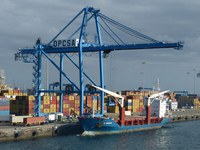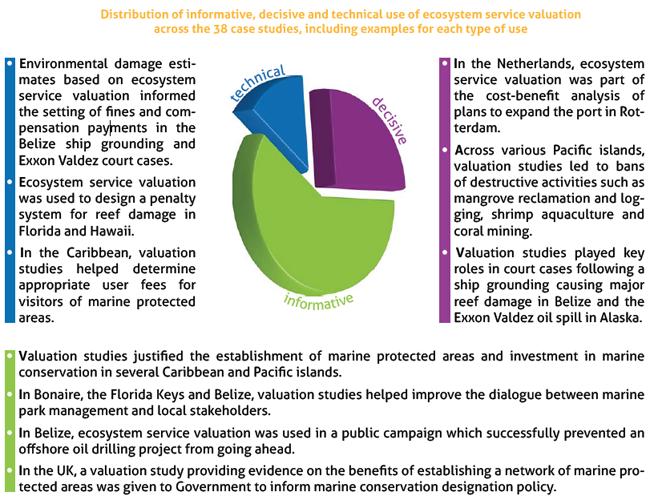1.3.4 Ecosystem service assessment in marine management around the world

 A review of 38 case studies around the world for which evidence was found that ecosystem service valuation had been used in marine decision making [Friedrich et al., 2014
A review of 38 case studies around the world for which evidence was found that ecosystem service valuation had been used in marine decision making [Friedrich et al., 2014  ]. Here is a flavour of where and how ecosystem service valuation is currently informing and supporting marine management.
]. Here is a flavour of where and how ecosystem service valuation is currently informing and supporting marine management.
One of the most famous cases using ecosystem service valuation concerned the Exxon Valdez oil spill in Alaska in 1989. After a lengthy litigation process in which ecosystem service valuation played an important role, Exxon was fined $500 million for damages to the environment.
Globally, ecosystem service valuation is being used in various contexts related to the conservation of marine ecosystems and marine resource management use.
For example, in Bonaire and several other Caribbean islands, ecosystem service valuation helped determine appropriate levels of entrance fees to marine protected areas for divers and other visitors.
In the Philippines, valuation studies led to the banning of destructive logging and shrimp aquaculture in mangrove forests and encouraged investment in mangrove conservation.
In Florida and Hawaii, ecosystem service valuation supported the design and introduction of a penalty payment system for damage caused to coral reefs.
Two thirds of the 38 case studies were located in the Caribbean and the South and West Pacific, where countries are highly dependent on their marine resources for subsistence and income to the national economies.
 In Europe, the use of ecosystem service valuation in environmental policy making is a more recent development. Here, valuation studies have been used, for example, to inform coastal risk management strategies in the United Kingdom or as part of environmental impact assessments of harbour development and gas extraction projects in the Netherlands.
In Europe, the use of ecosystem service valuation in environmental policy making is a more recent development. Here, valuation studies have been used, for example, to inform coastal risk management strategies in the United Kingdom or as part of environmental impact assessments of harbour development and gas extraction projects in the Netherlands.
In the 38 case studies, ecosystem service valuation was most frequently used to inform policy and management, justify potentially controversial decisions or investments, support stakeholder engagement or raise awareness about an issue. In several cases it also supported decisions about the formulation of regulations, development permitting or court rulings. The most frequent technical use was to determine user fee levels for marine parks.


